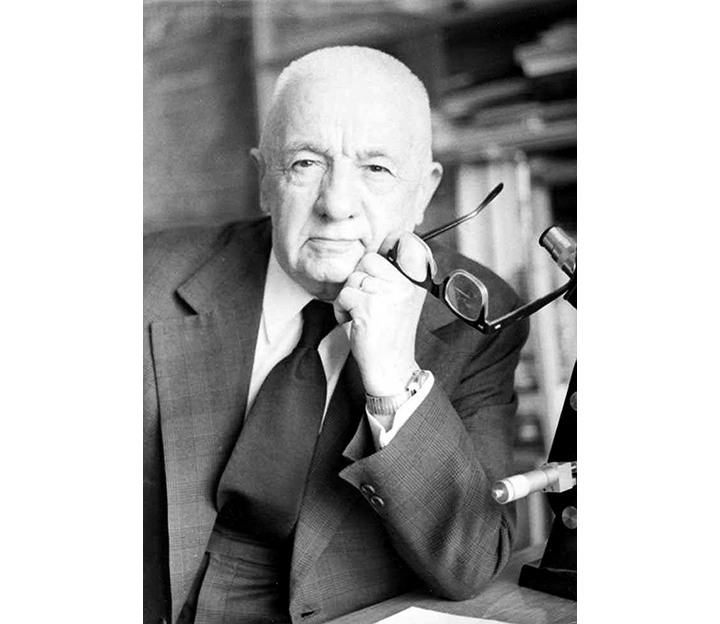Remembering founding fathers: Georgi Nadjakov
News, 08 January 2022
On 8 January, the Joint Institute pays tribute to the memory of an outstanding Bulgarian physicist Georgi Stefanov Nadjakov (8.01.1897 – 24.02.1981) who made a significant contribution to the development of JINR during the first decades of the Institute’s existence.
From 1957 to 1970, G. S. Nadjakov was the Plenipotentiary Representative of Bulgaria in JINR. From the moment of the Institute’s foundation to 1973, he was a member of the Scientific Council of JINR.
His study at Sofia University was interrupted in 1916 because of the First World War. Being a student, he was mobilised and sent to the reserve officers’ school. When he graduated from the school in 1918, he came back to the University. In 1925-26, he worked in Paris with Paul Langevin and Marie Skłodowska Curie. In 1927, he began teaching at Sofia University (from 1932 – Professor, in 1947-52 – Rector). In 1946-71, he was the Director of the Institute of Physics with Atomic Scientific Experimental Base at the Bulgarian Academy of Sciences.
Georgi Nadjakov was an active public figure who held high positions. In different years, he was Deputy Chairman of the Board on the Peaceful Use of Nuclear Energy of the Council of Ministers of the Republic of Bulgaria, Chairman of the Bulgarian Peace Committee. He was one of the founders of the World Peace Movement and Honorary Chairman of the World Peace Council (1970-1980). He was a Corresponding Member of the Academy of Sciences in Göttingen (1940), Academician of the Bulgarian Academy of Sciences (1945), in 1945-58 years, he held the post of the Vice-President of the Bulgarian Academy of Sciences. He was a foreign member of the USSR Academy of Sciences (1958). He received the Dimitrov Prize in 1950 and the Frédéric Joliot-Curie gold medal in 1967.
The scientific heritage of Georgi Nadjakov relates to physics of dielectrics and semiconductors, magnetism, nuclear physics. G. Nadjakov published more than 60 scientific papers devoted to solid state physics. The scientist experimentally investigated photoconducting properties of sulphur. He discovered the permanent photoelectret state of matter (1937). The discovery made it possible to create and develop photocopiers.
Moreover, despite being very busy with public and organizational activities, Georgi Nadjakov developed and constructed new types of electrometers. In cooperation with his son, Professor Emil Nadjakov, he developed a vacuum X-ray spectrograph.
The Institute of Solid State Physics in his birthplace – Bulgaria – was named after Georgi Nadjakov, just like one of the alleys at the DLNP JINR site.
